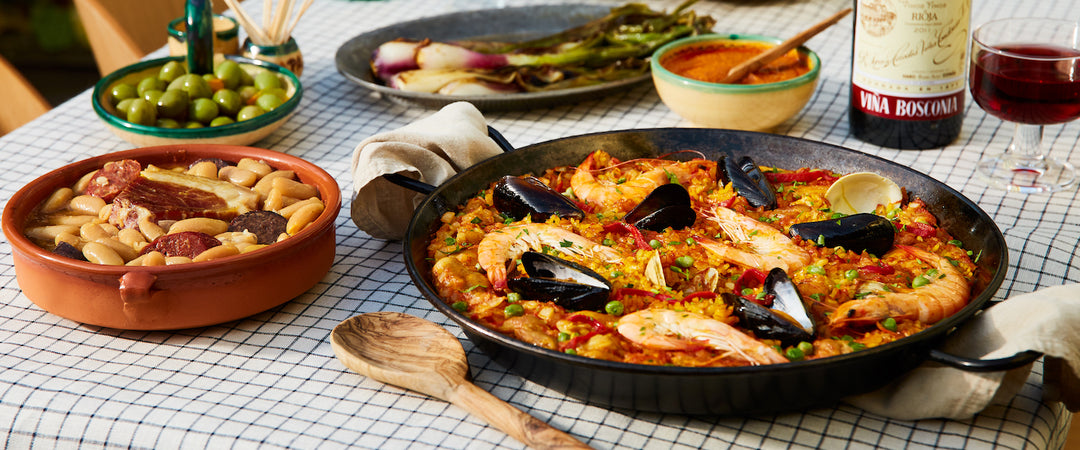November 2025 Blanco Y Tinto Club
 
|
Avancia 2024 Regular Price: $28.99
Club Price: $24.64
|
The vineyard for Avancia’s Cuvée de O sits high above the valley of the Sil River, where the slopes turn sunward and the air feels just a little thinner. I had the good fortune to visit them right before the grapes that made this wine were harvested in September of 2024. The drive up is a steady climb past chestnut trees and terraced walls of slate. Near the top, the view widens into an ooh and ahh panorama of mountains folding into the distance, the river flashing like a ribbon of light far below. It’s a place that makes the saying feel inevitable: vines with a good view make good wine.

The vines here were planted over the last 30-40 years, trained as low bush vines in the traditional Galician style, each one a bushy shrub gripping the mix of clay and broken slate. They’re dry farmed, organic, and tangled with history, mostly Mencía, but with the occasional Garnacha Tintorera or Alicante Bouschet woven in, respecting the long standingn Iberian tradition of co-planting, not strictly by variety. The why is often debated, but the benefits are obvious: greater diversity means disease resistance, different ripening can inject different ripeness degrees, and blends often support a richer outcome. Standing among them, you see the fractured stones underfoot, shimmering with flecks of quartz, and it’s easy to understand how minerality is more than a tasting note. It’s the smell of dust and heat the rocks that allow rain to reach the roots and bigger stones to retain daytime heat into the night. In a cool Northestern River valley facing North, every bit of warmth radiated from a rock means another small bit of ripeness gained.

I visited just before harvest, when the grapes were still taut, and the air smelled of crushed herbs and iron-rich soil. The clusters hung low and tight, the berries cool to the touch despite the sun. The winemaking is simple and honest: hand-harvested fruit are fermented in small open-top stainless vats using native yeast, pressed gently in an old basket press, and then aged for eight months on its lees in used French oak barrels. Nothing flashy, nothing excessive. The goal is crafting a wine that reflects its field blend, slope, soil, and altitude more than human intervention.


In the glass, the 2024 Cuvée de O pours deep purple, with a perfume of violets, blackberries, and the faintest trace of smoke, like a distant fire on a fall day. The texture is pure silk — poised between lift and weight, focus and warmth. It’s a wine that feels both modern and ancient, polished yet true to its rugged hillside home. There’s no trace of the barnyard funk that sometimes shadows avant-garde Mencía; this one is crystalline, a ruby laser beam of fruit and freshness. And its faint smokiness induces the sort of longing that the very faint smell of fall burnpiles bring on a clear fall day. Seasons come and go, memories stay.
If the nearby vineyards of Bierzo tend toward darkness and spice, Valdeorras seems to sing in a higher register with a voice at full focus and clarity. Drink it now, while the fruit hums with energy, or hold it for a few years if you can resist. But fair warning: we might drink it all before you get the chance. Oh, and since it's obligatory to comment on holiday fare pairing: this wine will go as well with the berries and gravies of American Thanksgiving as it would with a charcuterie plate of chorizo and smoky cheeses.
 |
Forjas Salnes 2024 Regular Price: $36.99
Club Price: $31.44
|
Leirana Albariño comes from Rodrigo Méndez of Forjas del Salnés, whose family helped found the Rías Baixas appellation. Rodri farms some of the oldest coastal vines in Galicia (planted between 1952 and 1982) rooted in pure granite and sand just a few meters above the Atlantic. It carries the Atlantic in its bones: salt air, cool wind, and that stony freshness that lingers after a wave breaks. The name Leirana likely traces to the old stream that once wound through these parcels toward the sea.
I tasted it first too cold, and almost questioned my choice of this wine for the Club. It seemed straight-lined to a fault, almost timid or (gasp) boring. But as it warmed in the glass, it came alive. White melon, a touch of pineapple, bright acid, and that saline flicker that makes true Albariño unmistakable. The color is pale straw with a faint green edge, like sunlight on the surface of water. When allowed to breathe, it becomes a textbook example of why this grape made Galicia famous: clean, classical, and deeply mineral.
Leirana ferments with native yeast and ages partly in large neutral foudres, partly in stainless steel, without malolactic fermentation. The approach preserves every nuance of place: granite dust, sea spray, and citrus oil in harmony.
People often relegate Albariño to the seafood corner of the table. It's automatically paired and married to scallops, oysters, and freshly cooked octopus. Fair enough, but this one deserves more. Its acidity and saline depth make it an ideal partner for turkey and gravy, or simply as an aperitif before a holiday meal when the oven’s running and the room smells of herbs.



